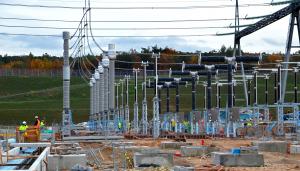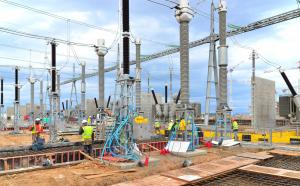For the moment, the electrical needs of the ITER buildings and the worksite are covered by a 15 kV line extended from the neighbouring CEA research centre. But early next year, the first part of the 400 kV switchyard will be "energized" and ITER will draw power directly from the national grid.
Work is underway now in the switchyard and in the area of the transformers to prepare for this moment. Contractors are creating the concrete slabs that will support additional electrical equipment and laying cables for the switchyard's remote control operation and for communication with the French transmission system operator RTE (Réseau de transport d'électricité).
"ITER power requirements are considerable and we must not disturb power distribution by the French national grid in any way," explains Joël Hourtoule, head of the ITER Electrical Power Distribution Section. "This means that we must 'exchange signals' with RTE and keep them informed of our plasma campaign schedule. In some exceptional circumstances—like an unexpected cold spell combined with several reactors closed for maintenance—they can ask us to delay a pulse."
And like TGVs, ITER pulses will never be launched precisely at the hour when European networks are synchronized ... rather a few minutes before or after.
Mega infrastructures and delicate balance: electricity, especially at ITER, is about more than meets the eye.
* Train à Grande Vitesse ("high speed train")



